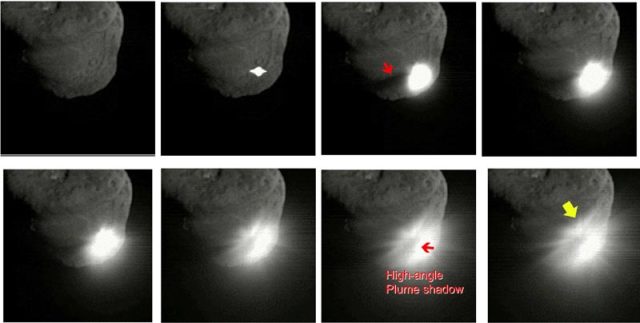
Last Friday, NASA announced the end of attempts to contact the Deep Impact mission. Deep Impact got its name from its activity back in 2005: dropping a refrigerator-sized object into a comet at 37,000 kph and observing the debris that spewed out. This gave us an unprecedented view of the composition of comets. But the mission didn't end there; free to wander the Solar System, the probe turned its instruments on other comets, performed a close flyby of a second, and imaged a third.
This year, Deep Impact had turned its instruments on comet ISON and was observing from a distance when it suddenly went silent. After a month of attempting to reestablish contact, NASA officially gave up trying.
Deep Impact is not the only comet mission that's on people's minds, though. An even older bit of hardware started life as the International Sun-Earth Explorer back in 1978. But with that mission done, the spacecraft was maneuvered to where it could use the Moon's gravity to fling it on an orbit where it led Earth around the Sun. Renamed the International Cometary Explorer (ICE), it went on to observe comet Giacobini-Zinner in 1985.
Now, Emily Lakdawalla of the Planetary Society writes that ICE's speed and 30 years have combined to ensure that ICE is on the verge of catching Earth from behind. NASA has been out of touch with ICE since 1998, but the probe still responded when contacted back then. According to her story, some scientists are thinking it might be possible to maneuver ICE so it goes back into an orbit at the Earth's L1 Lagrange point, where its instruments will let it return to scientific duty. But as Lakdawalla notes, money is a scarce commodity for NASA, so it's not clear whether any attempt to reestablish contact will be made.
reader comments
15